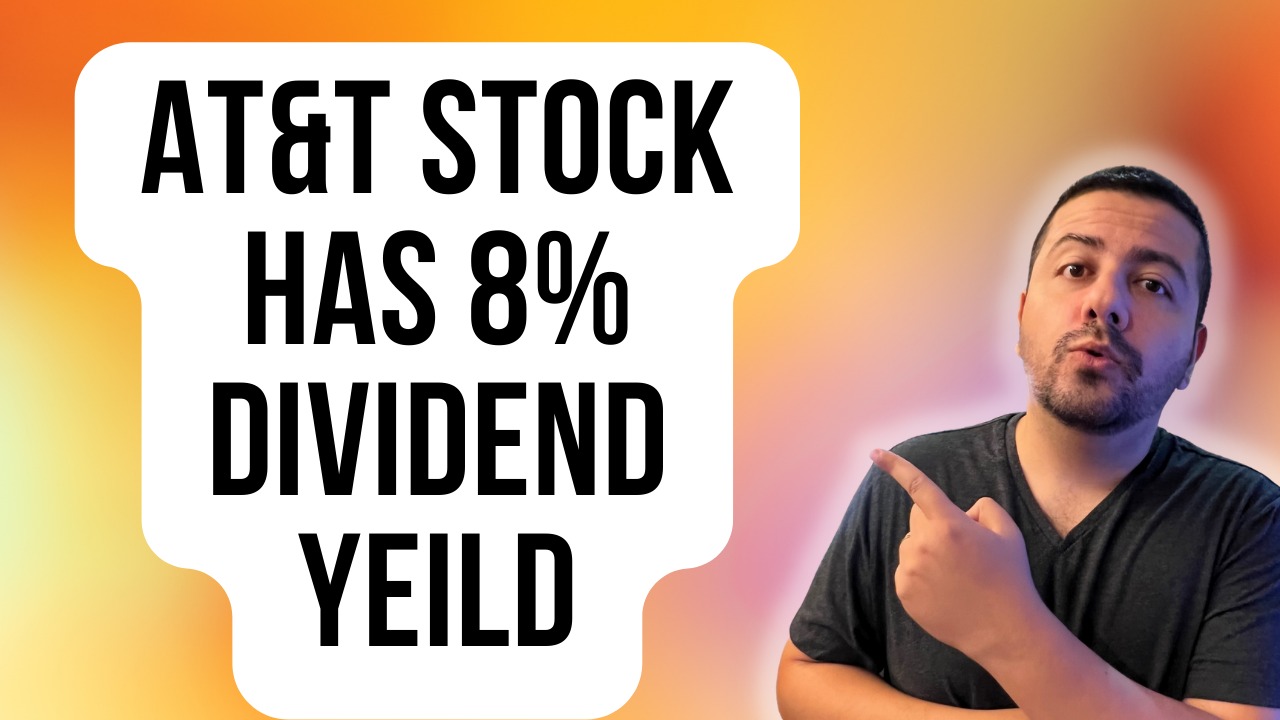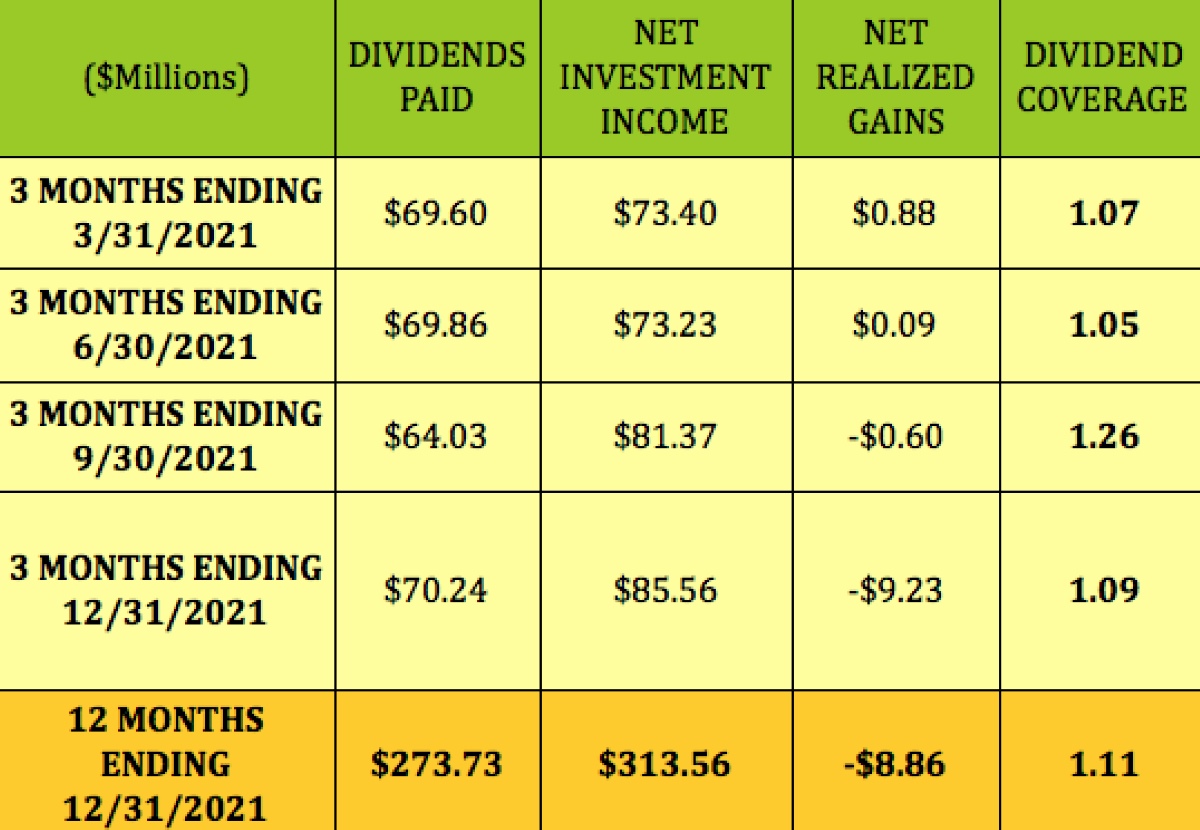

Finance
When Does AT&T Pay Dividends?
Published: January 3, 2024
Find out the dividend payment schedule for AT&T and stay updated on its finance. Learn when AT&T pays dividends and make informed investment decisions.
(Many of the links in this article redirect to a specific reviewed product. Your purchase of these products through affiliate links helps to generate commission for LiveWell, at no extra cost. Learn more)
Table of Contents
Introduction
Welcome to the world of dividends! If you’re an investor looking for steady income, dividends can be a great source of passive cash flow. In this article, we’ll be exploring the dividend payments of AT&T, one of the largest telecommunications companies in the world.
AT&T has a long-standing history of providing reliable services to millions of customers. In addition to its core business operations, AT&T also values its shareholders by distributing dividends on a regular basis. By understanding when AT&T pays dividends, you can plan your investment strategy accordingly and take advantage of this income stream.
Dividends are a portion of a company’s profits that are distributed to its shareholders. Companies like AT&T that pay dividends typically do so to reward their investors for their ownership in the company. By receiving dividends, shareholders can generate a passive income stream and potentially benefit from the company’s success.
AT&T has established a dividend policy that outlines its commitment to distributing a portion of its earnings to shareholders. This policy reflects AT&T’s commitment to shareholder value and its confidence in its ability to generate consistent profits. Now, let’s delve deeper into the specifics of AT&T’s dividend payments.
Understanding Dividends
Before we dive into the details of AT&T’s dividend payments, let’s first understand the concept of dividends. Dividends are a way for companies to share their profits with shareholders. When a company earns profits, it can choose to reinvest those profits back into the business or distribute them to shareholders in the form of dividends.
Dividends are typically paid out in cash, although some companies offer dividend reinvestment programs where shareholders can choose to receive additional shares of stock instead. The amount of dividends a shareholder receives is typically based on the number of shares they own. If a company pays a dividend of $0.50 per share and an investor owns 100 shares, they would receive a dividend payment of $50.
Dividends can be a valuable source of income for investors, especially those who are seeking regular cash flow from their investments. By investing in companies that pay dividends, investors can potentially generate a steady stream of income that can help them reach their financial goals.
It’s important to note that not all companies pay dividends. Some companies, especially younger and high-growth companies, may choose to reinvest their profits back into the business to fuel further growth. These companies typically don’t offer dividends to their shareholders but instead focus on capital appreciation.
However, established companies like AT&T often pay dividends as a way to reward their shareholders and provide them with a share of the company’s profits. Now that we have a solid understanding of dividends, let’s take a closer look at AT&T’s dividend policy and how it affects its shareholders.
AT&T Dividend Policy
AT&T has a robust dividend policy in place that outlines its commitment to distributing dividends to its shareholders. The company believes in returning value to its investors through regular dividend payments.
AT&T’s dividend policy is designed to provide stability and consistency to shareholders. The company aims to maintain a steady dividend payout to ensure that investors can rely on a predictable income stream.
The dividend policy takes into consideration various factors, including the company’s financial performance, cash flow, and growth prospects. AT&T understands the importance of balancing dividend payments with the need for reinvesting in the business to drive future growth.
AT&T is committed to maintaining a competitive dividend yield, which is the dividend payment divided by the stock price. This yield serves as a measure of the income potential for shareholders. By ensuring a competitive yield, AT&T aims to attract and retain investors who value stable and reliable dividend payments.
However, it’s important to note that AT&T’s dividend policy is subject to change based on various factors, including economic conditions, regulatory requirements, and the company’s strategic priorities. Investors should review the company’s financial reports and statements to stay updated on any changes to the dividend policy.
Now that we understand AT&T’s dividend policy, let’s explore the frequency of dividend distributions and when shareholders can expect to receive their dividend payments.
Regular Dividend Payments
AT&T is committed to providing regular dividend payments to its shareholders. These dividend payments serve as a reward for investing in the company and reflect AT&T’s dedication to shareholder value.
AT&T typically declares dividends on a quarterly basis, meaning that shareholders can expect to receive dividend payments every three months. This regularity allows investors to plan their finances and anticipate a steady income stream from their AT&T investments.
The amount of the regular dividend payments is determined by AT&T’s board of directors and is based on various factors, including the company’s financial performance, cash flow, and future growth prospects. It is important to note that the dividend amount can vary from quarter to quarter, depending on these factors.
AT&T has a long-standing history of paying dividends and has demonstrated its commitment to maintaining its dividend payments even during challenging economic times. This commitment to dividend sustainability is a testament to the company’s financial strength and its dedication to shareholder satisfaction.
Investors who rely on regular income from their investments can find value in AT&T’s regular dividend payments. These dividend payments can contribute to a diversified income portfolio and provide stability and consistency to investors seeking reliable sources of cash flow.
Next, we will explore the specific dates on which AT&T distributes its dividend payments to shareholders, allowing them to effectively plan and manage their finances.
Quarterly Dividend Distributions
AT&T distributes its dividend payments to shareholders on a quarterly basis. A quarterly dividend schedule means that investors can expect to receive dividend distributions four times throughout the year.
The specific dates for quarterly dividend distributions are determined by AT&T’s board of directors and are typically announced in advance. These dates are important for investors as they indicate when dividend payments will be made and when shareholders can expect to receive their share of the company’s profits.
AT&T follows a standardized schedule for its quarterly dividend distributions. The company typically announces the declaration date, which is the date on which the dividend is announced and approved by the company’s board of directors. This declaration date serves as the official confirmation of the dividend and provides investors with the necessary information to plan accordingly.
After the declaration date, AT&T announces the ex-dividend date, which is the date on which a shareholder must own the stock in order to be eligible to receive the dividend payment. The ex-dividend date is typically a few days before the record date, which is the date on which the company reviews its records to determine the shareholders who will receive the dividend.
Finally, AT&T specifies the payment date, which is the date on which the dividend payments are distributed to eligible shareholders. On this date, investors who meet the necessary ownership requirements will receive their share of the dividend based on the number of shares they own.
It’s important for investors to keep track of the quarterly dividend distribution dates and ensure that they meet the ownership requirements to receive the dividend payment. By staying informed and following the schedule, investors can effectively manage their finances and capitalize on AT&T’s regular dividend distributions.
Now that we understand the dates involved in AT&T’s dividend distributions, let’s explore another option available to shareholders – the Dividend Reinvestment Program.
Dividend Payment Dates
AT&T has specific dividend payment dates that investors should be aware of in order to anticipate and manage their finances effectively. These dates determine when shareholders will receive their dividend payments.
AT&T typically follows a predictable schedule for dividend payments. The company announces the dividend declaration date, which is the date on which the dividend is formally announced and approved by the board of directors. This declaration date signifies the company’s commitment to distributing dividends to its shareholders.
After the declaration date, AT&T announces the ex-dividend date, which is crucial for determining which shareholders are eligible to receive the dividend. Investors who hold AT&T stock on or before the ex-dividend date are entitled to receive the upcoming dividend payment.
The record date follows the ex-dividend date and is the date on which AT&T reviews its records to determine the eligible shareholders who will receive the dividend. Investors who are recorded as shareholders on this date will receive the dividend payment.
Finally, AT&T specifies the payment date, which is when the dividend payments are distributed to eligible shareholders. On this date, investors who meet the ownership requirements will receive the dividend payment in cash or through reinvestment, depending on their preference.
It’s important to note that the dividend payment dates may vary from quarter to quarter, depending on factors such as weekends, holidays, and the company’s internal processes. AT&T announces these dates well in advance to provide shareholders with ample time to plan and manage their finances accordingly.
By staying informed about the dividend payment dates, shareholders can effectively track their income from AT&T investments and utilize dividend payments to meet their financial goals. Whether it’s reinvesting the dividends or using them for personal expenses, understanding the dividend payment dates is essential for investors.
Now, let’s explore another option available to AT&T shareholders – the Dividend Reinvestment Program.
Dividend Reinvestment Program
AT&T offers a Dividend Reinvestment Program (DRIP) to its shareholders. A DRIP allows investors to automatically reinvest their dividend payments back into additional shares of AT&T stock. This program provides shareholders with the opportunity to compound their investments and potentially increase their ownership in the company over time.
The Dividend Reinvestment Program eliminates the need for shareholders to receive dividend payments in cash. Instead, the program allocates the dividend amount to purchase additional shares of AT&T stock at the prevailing market price, usually at a discounted rate.
By reinvesting dividends through the DRIP, shareholders can take advantage of the power of compounding. Over time, the additional shares purchased through the reinvestment of dividends can result in a larger ownership stake in the company and potentially lead to greater future dividend payments.
The Dividend Reinvestment Program is typically available to both individual shareholders and institutional investors. Participating in the program is optional, and shareholders have the freedom to choose whether they want to enroll in the DRIP or receive dividend payments in cash.
AT&T’s Dividend Reinvestment Program is a convenient and efficient way for shareholders to put their dividend income to work, increasing their investment in the company and potentially benefitting from the long-term growth of AT&T’s stock.
Shareholders who are interested in enrolling in the Dividend Reinvestment Program should check with their brokerage firm or financial institution to determine the specific requirements and procedures for participating in AT&T’s DRIP.
Now that we have explored the Dividend Reinvestment Program, let’s consider some factors that could affect AT&T’s dividend payments.
Factors Affecting Dividend Payments
Several factors can influence AT&T’s dividend payments. It is important for shareholders to understand these factors as they can impact the amount and consistency of the dividend payments they receive.
1. Financial Performance: AT&T’s financial performance plays a significant role in determining the dividend payments. The company’s ability to generate profits, cash flow, and revenue growth directly impacts its capacity to distribute dividends to shareholders. A strong financial performance can support higher dividends, while weaker performance may result in reduced or suspended dividend payments.
2. Economic Conditions: Economic conditions, both globally and domestically, can influence AT&T’s dividend payouts. In times of economic downturn or financial instability, the company may choose to conserve cash and reduce or even suspend dividend payments to preserve capital. Conversely, during periods of strong economic growth, AT&T may increase dividend payments to share its success with shareholders.
3. Regulatory Environment: The telecommunications industry is subject to regulatory oversight, which can affect AT&T’s financial position and dividend policy. Changes in regulations, such as new licensing requirements or pricing regulations, may impact the company’s profitability and, consequently, its ability to pay dividends.
4. Debt Obligations: AT&T’s debt obligations and financing activities can impact dividend payments. If the company has significant debt and needs to allocate a portion of its cash flow to interest payments and debt reduction, it may have less available funds for dividend distributions.
5. Strategic Investments: AT&T’s strategic investments, such as mergers and acquisitions, can affect dividend payments. If the company chooses to allocate a significant portion of its resources towards growth initiatives, it may result in lower dividend payments as a means to preserve capital for these investments.
While AT&T has historically demonstrated a commitment to paying dividends, it is essential for shareholders to consider these factors as they can influence the company’s dividend policy. By staying informed and understanding the dynamics that impact dividend payments, shareholders can make informed investment decisions.
Now, let’s wrap up the article with a summary of what we’ve covered.
Conclusion
AT&T has a strong commitment to providing regular and reliable dividend payments to its shareholders. By understanding when AT&T pays dividends, investors can effectively plan their investment strategies and capitalize on the potential income generated from these dividend distributions.
Dividends are a way for companies like AT&T to share their profits with shareholders, providing a valuable source of passive income for investors. AT&T’s dividend policy reflects its dedication to shareholder value and its confidence in its ability to generate consistent profits.
AT&T pays dividends on a quarterly basis, following a predictable schedule of dividend declaration, ex-dividend, record, and payment dates. These dates allow shareholders to anticipate and manage their finances effectively.
In addition, AT&T offers a Dividend Reinvestment Program (DRIP) that allows shareholders to reinvest their dividends back into additional shares of AT&T stock. This program provides an opportunity for investors to potentially increase their ownership in the company over time.
While AT&T strives to maintain a steady and competitive dividend payout, it’s important to recognize that dividend payments can be influenced by factors such as financial performance, economic conditions, regulatory environment, debt obligations, and strategic investments.
By staying informed about these factors and understanding AT&T’s dividend policy, shareholders can make informed investment decisions and potentially benefit from the long-term growth and income potential that AT&T offers through its dividend payments.
In conclusion, AT&T’s commitment to providing regular dividends, coupled with its robust dividend policy and potential for reinvestment through its DRIP, makes it an attractive option for investors seeking reliable income and the opportunity for long-term wealth accumulation.
Remember to consult with a financial advisor or do thorough research before making any investment decisions. Your investment strategy should align with your financial goals and risk tolerance.














